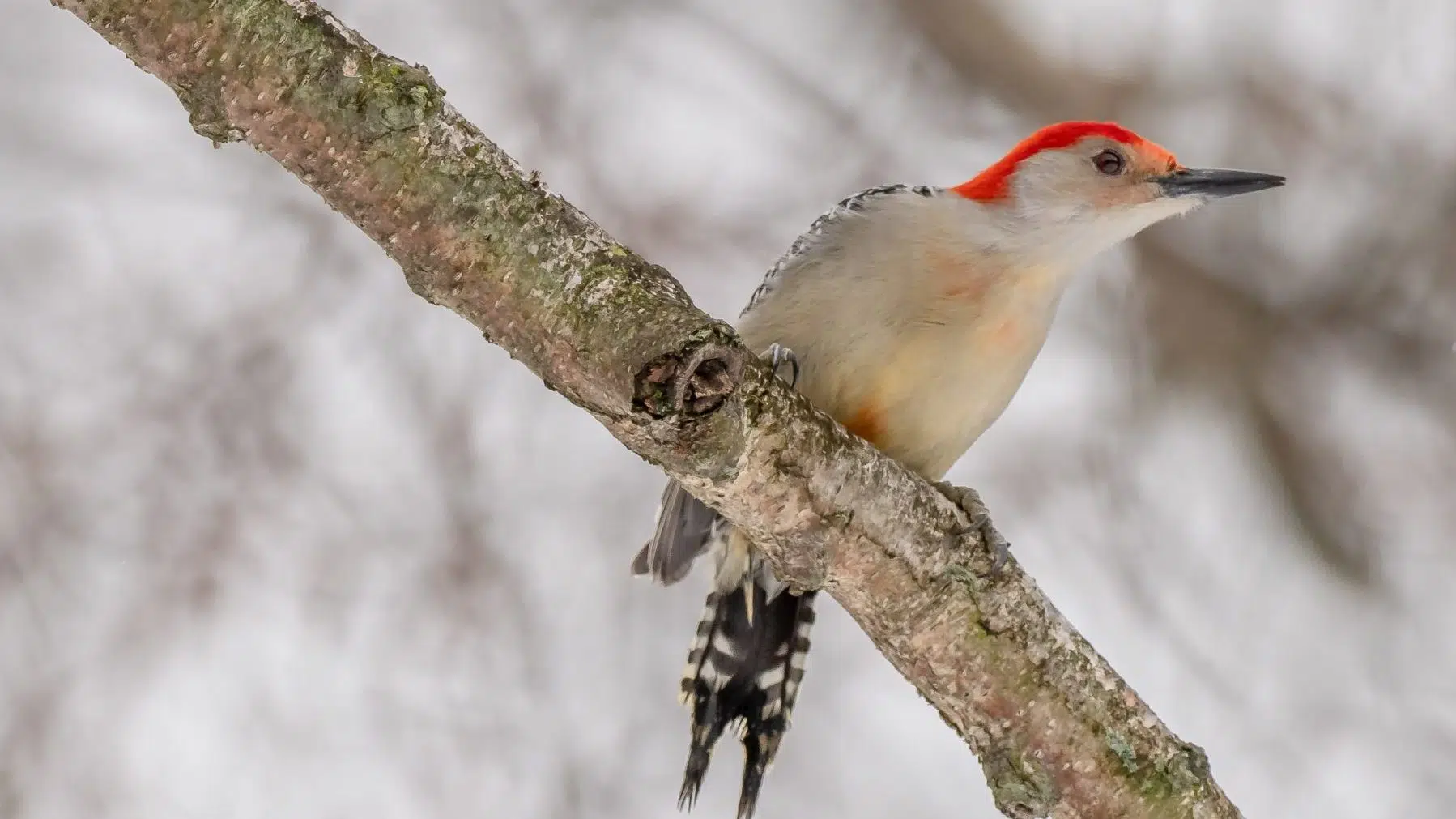Birds
Red-bellied Woodpecker
Melanerpes carolinus

Voice: Harsh rolling churr by both sexes or a cha, cha, cha by mates
In early spring red-bellied woodpeckers in forests, woodlands, and wooded suburbs tap on trees, gutters, roofs and siding to claim territory and to attract a mate. When a mate is found, tapping is shared by both sexes at a desirable nesting site. In seven to ten days the breeding pair excavates a cavity in a dead tree or pole. Occasional pairs will take over the nests of other birds. Once the cavity is made or chosen courtship continues with one red-bellied woodpecker entering the cavity listening to the other red-bellied woodpecker is tapping outside. Each woodpecker takes turns tapping to the other.
Red-bellied woodpeckers are thought to be monogamous. Some pairs may stay together for several breeding seasons. They raise 1-2 broods, group of young birds, each season. Females lay 4-5 smooth glossy white eggs on a bed of wood chips remaining from excavating the cavity. Both sexes incubate their eggs for 12-13 days. Young birds are tended to by both parents, and leave the nest at around 26 days.
Once leaving the nest, red-bellied woodpeckers use their long barbed, split tongue to forage on prey in crevices on limbs and trunks of trees. Males have longer, wider tipped tongues than females. This difference may allow pairs to forage in slightly different areas within their territory. Red-bellied woodpeckers may store food in crevices of tree bark to hold for later in the year. Spring through summer red- bellied woodpeckers prefer eating insects, spiders, nuts and fruits. During winter, their diet can consist of seeds including seed from feeders.
Red-bellied woodpeckers are protected birds that are not currently listed as a threatened or endangered species. They have extended their breeding range north over the last 100 years. Populations have increased throughout most of their range. Dead or decaying trees are essential for red-bellied woodpeckers’ and other cavity nesting species survival. Retention of logs and decaying trees are a necessary component of any yard wishing to attract wildlife. “If we recognize and understand the natural value of snags, dead limbs, and logs, they become more appealing to the human eye.” -Melissa J. Santiago and Amanda D. Rodewald, Ph.D. School of Natural Resources, The Ohio State University
Best Location to View: Buckeye Bud Bird Feeding Station, Helen Layer Rhododendron Garden, Old Valley Trail, Woodland Trail
Color: Head and belly cream color. Wings, tail and back barred with black and white stripes. Nape of neck red-orange in both sexes. Male red-orange nape continues to beak. Red-orange belly can be seen on rare occasions
Range: Forest in eastern United States, except for northern New England.
Size: 9-10.5"




